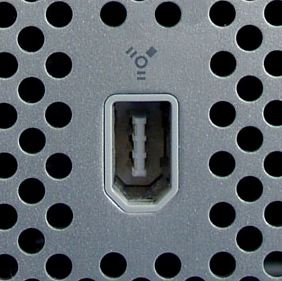“To enable the massive 256GB/s memory bandwidth that Ryzen AI Max delivers, the LPDDR5x is soldered,” writes Framework CEO Nirav Patel in a post about today’s announcements. “We spent months working with AMD to explore ways around this but ultimately determined that it wasn’t technically feasible to land modular memory at high throughput with the 256-bit memory bus. Because the memory is non-upgradeable, we’re being deliberate in making memory pricing more reasonable than you might find with other brands.”
😒🍎
Edit: to be clear, I was only trying to point out that “we’re being deliberate in making memory pricing more reasonable than you might find with other brands” is clearly targeting the Mac Mini, because Apple likes to price-gouge on RAM upgrades. (“Unamused face looking at Apple,” get it? Maybe I emoji’d wrong.) My comment is not meant to be an opinion about the soldered RAM.
To be fair it starts with 32GB of RAM, which should be enough for most people. I know it’s a bit ironic that Framework have a non-upgradeable part, but I can’t see myself buying a 128GB machine and hoping to raise it any time in the future.
If you really need an upgradeable machine you wouldn’t be buying a mini-PC anyways, seems like they’re trying to capture a different market entirely.
My biggest gripe about non replaceable components is the chance that they’ll fail. I’ve had pretty much every component die on me at some point. If it’s replaceable it’s fine because you just get a new component, but if it isn’t you now have an expensive brick.
I will admit that I haven’t had anything fail recently like in the past, I have a feeling the capacitor plague of the early 2000s influenced my opinion on replaceable parts.
I also don’t fall in the category of people that need soldered components in order to meet their demands, I’m happy with raspberry pis and used business PCs.
You can get an MS-A1 barebones from minisforum right now for like 215 - BYO cpu, ddr5, and m2. But it’s got oculink on the back (the pcie dock is 100, but not mandatory if you’re not going to use it). I think it’s supposed to be on sale for another couple days.
Yeah hugely disappointed by this tbh. They should have made a gaming capable steam machine in cooperation with valve instead :)
Yeah.
But that’s AMD’s fault, as they gimped the GPU so much on the lower end. There should be a “cheap” 8-core, 1-CCD part with close to the full 40 CUs… But there is not.
They still could; this seems aimed at the AI/ML research space TBH
This is an AI chip designed primarily for running AI workflows. The fact that it can game is secondary
Yeah exactly, its worthless… Even the big players already admit to the AI hype being over. This is the worst possible thing to launch for them, its like they have no idea who their customers are.
The AI hype being over doesn’t mean no one is working on AI anymore. LLMs and other trained models are here to stay whether you like it or not.
I mean, it’s not. You can do aí workflows with this wonderful chip.
If you wanna game, go buy nvidia
Well, more specifically: why didn’t they try to go for LPCAMM?
Because you’d get like half the memory bandwidth to a product where performance is most likely bandwidth limited. Signal integrity is a bitch.
I thought LPCAMM was designed specifically to address the bandwidth and connectivity issues that crop up around high-bandwidth + low-voltage RAM?
From what I understand, they did try, but AMD couldn’t get it to work because of signal integrity issues.
Framework releasing a Mac Mini was certainly not on my bingo card for this year.
Ok, should I know who framework is? I’ve been a PC gamer since forever and I’ve never heard of this company.
They make repairable laptops.
repairable and upgradable*
I know it’s an absolutely banal nitpick, but I think it’s unfortunately a revelation in the current laptop market that ~90% of a laptop stays good for a really really long time, and the other 10% can be upgraded piecemeal as the need arises. Obviously this was never news to the Desktop world, but laptop manufacturers got away with claiming this was impossible for laptops in the name of efficiency and portability.
deleted by creator
Lmao the news about this desktop is strangling their website to the point of needing a 45 minute waiting list
The Lemmy Lick strikes again!
Holy moly this is awesome! I am in for the 128GB SKU.
That’s 96GB of usable VRAM! And way more CPU bandwidth than any desktop Zen chip.
I know people are going to complain about non upgradable memory, but you can just replace the board, and in this case it’s so worth it for the speed/power efficiency. This isn’t artificial crippling, it physically has to be soldered, at least until LPCAMM catches on.
My only ask would be a full X16 (or at least a physical X16/electrical x8) PCIe slot or breakout ribbon. X4 would be a bit of a bottleneck for some GPUs/workloads… Does Strix Halo even support that?
I understand the memory constraints but it does feel weird for framework, is all I have to say. But that’s also the general trajectory of computing from what it seems. I really want lpcamm to catch on!
Apparently Framework did try to get AMD to use LPCAMM, but it just didn’t work from a signal integrity standpoint at the kind of speeds they need to run the memory at.
Sounds like it doesn’t bode well for the future of DIMMs at all, TBH.
You have a DIMM view of the future.
My AM5 system doesn’t post with 128GB of 5600 DDR5 at higher than 4400 at JEDEC timings and voltage. 2 DIMMs are fine. 4 DIMMs… rip. So I’d say the present of DIMMs is already a bit shaky. DIMMs are great for lots of cheap RAM. I paid a lot less than what I’d have to pay for the equivalent size of RAM in a Framework desktop.
Eventually most system RAM will have to be packaged anyway. Physics dictates that one pays a penalty going over pins and mobo traces, and it gets more severe with every advancement.
It’s possible that external RAM will eventually evolve into a “2nd tier” of system memory, for background processes, spillover, inactive programs/data, things like that.
That would be fine. But as long as it can use it as RAM and not just a staging ground.
Keep in mind that it would be pretty slow, as it doesn’t make sense to burn power and die area on a wide secondary bus.
deleted by creator
What’s a SKU? Google just says “Stock Keeping Unit”, but I don’t think that’s correct in this context.
It’s correct. A product with various options will have each combination of options under a different SKU. It’s a singular number that identifies an exact version of a product.
In this context, SKU refers to a variant of this product. That is the correct acronym as I understand
As others said.
In this context it would be one of the CPU/Memory combinations framework offers: https://en.wikipedia.org/wiki/List_of_AMD_Ryzen_processors#Strix_Halo_(Zen_5/RDNA3.5/XDNA2_based)
Basically another word for ‘Product Number’ or ‘P/N’ for short.
Calling it a gaming PC feels misleading. It’s definitely geared more towards enterprise/AI workloads. If you want upgradeable just buy a regular framework. This desktop is interesting but niche and doesn’t seem like it’s for gamers.
I think it’s like Apple-Niche
Question about how shared VRAM works
So I need to specify in the BIOS the split, and then it’s dedicated at runtime, or can I allocate VRAM dynamically as needed by workload?
On macos you don’t really have to think about this, so wondering how this compares.
It’s typically dynamic
On my 7800, it’s static. The 2GB I allocate is not usable for the CPU, and compute apps don’t like it “overflowing” past that.
This is on Linux, on a desktop, ASRock mobo. YMMV.
It will most likely be dynamic, with the option to statically set it.
I feel like this is a big miss by framework. Maybe I just don’t understand because I already own a Velka 3 that i used happily for years and building small form factor with standard parts seems better than what this is offering. Better as in better performance, aesthetics, space optimization, upgradeability - SFF is not a cheap or easy way to build a computer.
The biggest constraint building in the sub-5 liter format is GPU compatibility because not many manufacturers even make boards in the <180mm length category. Also can’t go much higher than 150-200 watts because cooling is so difficult. There are still options though, i rocked a PNY 1660 super for a long time, and the current most powerful option is a 4060ti. Although upgrades are limited to what manufacturers occasionally produce, it is upgradeable, and it is truly desktop performance.
On the CPU side, you can physically put in whatever CPU you want. The only limitation is that the cooler, alpenfohn black ridge or noctua l9a/l9i, probably won’t have a good time cooling 100+ watts without aggressive undervolting and power limits. 65 watts TDP still gives you a ryzen 7 9700x.
Motherboards have the SFF tax but are high quality in general. Flex ATX PSUs were a bit harder to find 5 or 6 years ago but now the black 600W enhance ENP is readily available from Velkase’s website. Drives and memory are completely standard. m.2 fits with the motherboard, 2.5in SATA also fits in one of the corners. Normal low profile DDR5 is replaceable / upgradeable.
What framework is releasing is more like a laptop board in a ~4 liter case and I really don’t like that in order to upgrade any part of CPU, GPU or memory you have to replace the entire board because it’s soldered on APU and not socketed or discrete components. Framework’s enclosure hasn’t been designed to hold a motherboard+discrete GPU and the board doesn’t have a PCIe slot if you wanted to attach a card via riser in another case. It could be worse but I don’t see this as a good use of development resources.
I think the biggest limiting factor for your mini PC will always be the VRAM and any workload that enjoys that fast RAM speed. Really, I think this mini PC from framework is only sensible for certain workloads. It was poised as a mobile chip and certainly is majorly power efficient. On the other hand I don’t think it is for large scaling but more for testing at home or working at home on the cheap. It isn’t something I expected from framework though as I expected them to maintain modularity and the only modularity here is the little USB cards and the 3D printed front panel designs lol
Edit
Personally I am in that niche market of high RAM speed. Also, access to high VRAM for occasional LLM testing. Though it is an AMD and I don’t know if am comfortable switching from Nvidia for that workload just yet. Renting a GPU is just barely cheap enough.
Now, can we have a cool European company doing similar stuff? At the rate it’s going I can’t decide whether I shouldn’t buy American because I don’t want to support a fascist country or because I’m afraid the country might crumble so badly that I can’t count on getting service for my device.
I could envision MNT Research trying this in the future, but not for now.
Wow, that stuff looks awesome! Thanks for sharing 🙏
This is not really that interesting and kinda weird given the non-upgradability, but I guess it’s good for AI workloads. It’s just not that unique compared to their laptops.
I’d love a mid-tower case with swappable front panel I/O and modular bays for optical drives; would’ve been the perfect product for Framework to make IMO.
The mini’s are the latest new hotness for desktop computing. I’ve been running a dirt cheap $90US, mini for 2 years now. It fits extremely well on my desk, just tucked in under the monitor leaving plenty of room for all the other tasks I do daily.
Will it play the latest hot new video game? Nope. But it will run OnlyOffice, FreeCAD and FreeDoom just fine.
They’d be competing with a bajillion other case makers. And I’m pretty sure there are already cases with what you ask (such as 5.25 bay mounted IO running off USB headers, at least).
Like… I don’t really see what framework can bring making a case. Maybe it could be a super SFF mobo with a GPU bay, but that’s close to what they did here.
There may be already such a case but you and me have never heard about it and it’s probably by some chinese no-name brand.
A proper metal mid-tower case with modular front panel I/O (using Framework’s system with the USB-C converters) and modular optical drive/hard drive bays would be unique.
At first I was skeptical during the announcement and then I saw the amount of ram and the rack. Imho it is not for enduser but for business. In fact we have workloads that would be perfectly fit that computer so why not?
its definitely a small business and homelab focused device. ill 100% be getting one for some local AI compute in my lab.
This is one stupid product. It really goes against everything the framework brand has identified with.
I’d argue not. It’s as modular/repairable as the platform can be (with them outright stating the problematic soldered RAM), and not exorbitantly priced for what it is.
But what I think is most “Framework” is shooting for a niche big OEMs have completely flubbed or enshittified. There’s a market (like me) that wants precisely this, not like a framework-branded gaming tower or whatever else a desktop would look like.
Desktops are already that, though. In order for them to distinguish themselves in the industry, they can’t just offer another modular desktop PC. They can’t offer prebuilts, or gaming towers, or small form factor units, or pre-specced you-build kits. They can’t even offer low-cost micro-desktops. All of those markets are saturated.
But they can offer a cheap Mac Studio alternative. Nobody’s cracked that nut yet. And it remains to be seen if this will be it, but it certainly seems like it’s lined up to.
Much like their laptops, I’m all for the idea, but what makes this desirable by those of us with no interest in AI?
I’m out of that loop though I get that AI is typically graphics processing heavy, can this be taken advantage of with other things like video rendering?
I just don’t know exactly what an AI CPU such as the Ryzen AI Max offers over a non-AI equivalent processor.
what makes this desirable by those of us with no interest in AI?
Juat maybe not all products need to be for everyone.
Sometimes it’s fine if a product fits your label of “Not for me”.There’s lots of workstation niches that are gated by VRAM size, like very complex rendering, scientific workloads, image/video processing… It’s not mega fast, but basically this can do things at a reasonable speed that you’d normally need a $20K+ computer to even try. Like, if something takes hours on an A6000 Ada or an A100, just waiting overnight on one of these is not a big deal. Cashing or failing to launch on a 4090 or 7900 XTX is.
That aside, the IGP is massively faster than any other integrated graphics you’ll find. It’s reasonably power efficient.
Much like their laptops
Its nothing like their laptops, thats the issue :/ Soldered in stuff all around, nonstandard parts that make it useless for use as a standard PC or gaming console.
Sorry, I was stating that “much like their laptops, I like the idea of these desktops.” I was not trying to insinuate that they themselves are alike.
and more at people who want the smallest, most powerful desktop they can build
Well, there’s this:



Yeah, the screw holes didn’t fit, that’s why. And the cooler didn’t fit the case, obviously. And the original cooler not the CPU’s turbo. It’s fine, it still runs most games in 3k on the iGPU.
The bowing on that board makes me think it’s not much longer for this world.
It’s like this even if i lay it on the desk. Was always like this. ¯\_(ツ)_/¯
It’s kinda cool but seems a bit expensive at this moment.
deleted by creator
I really hope this won’t be too expensive. If it’s reasonably affordable i might just get one for my living room.















